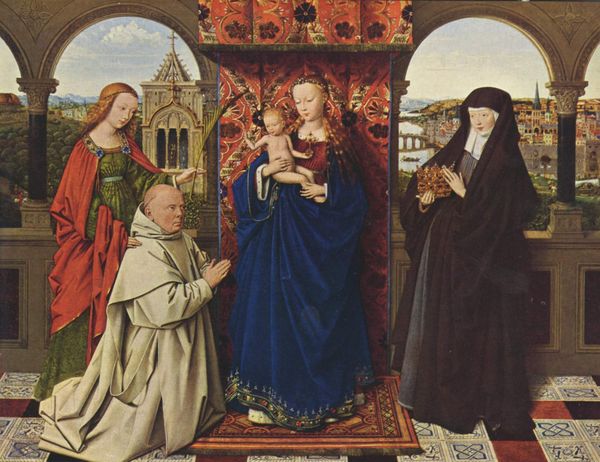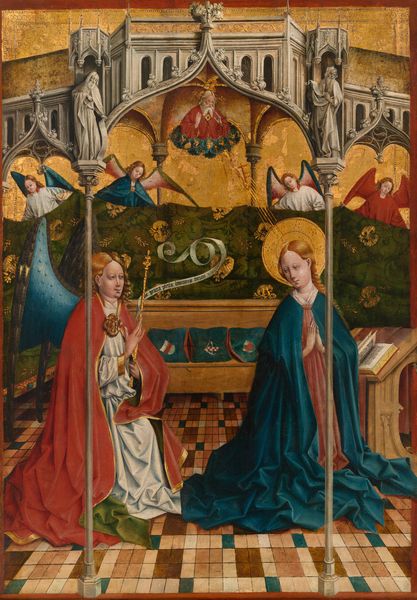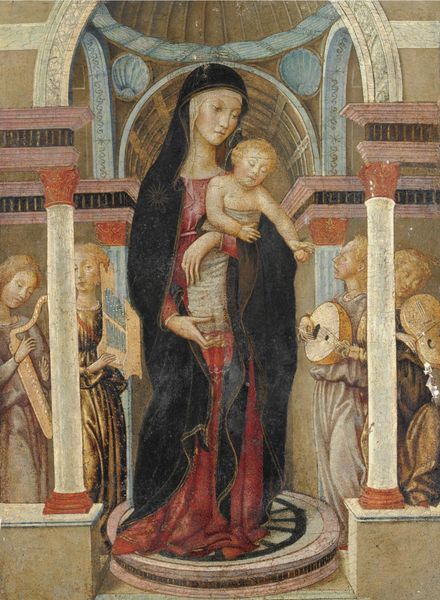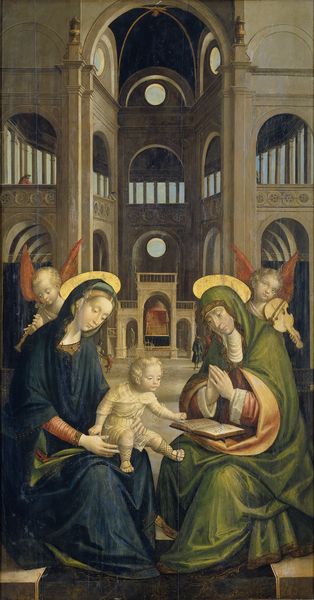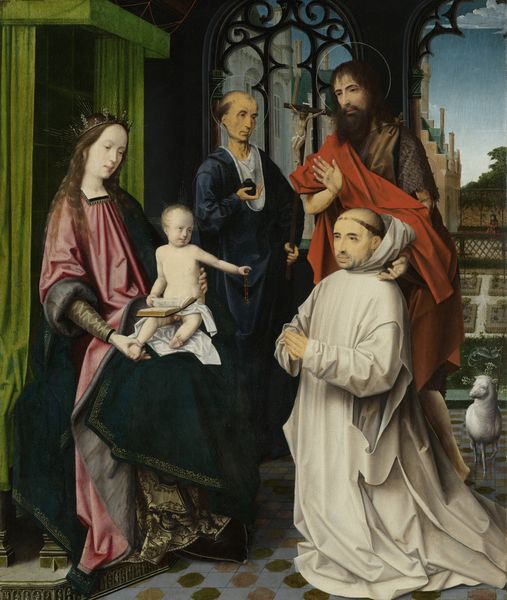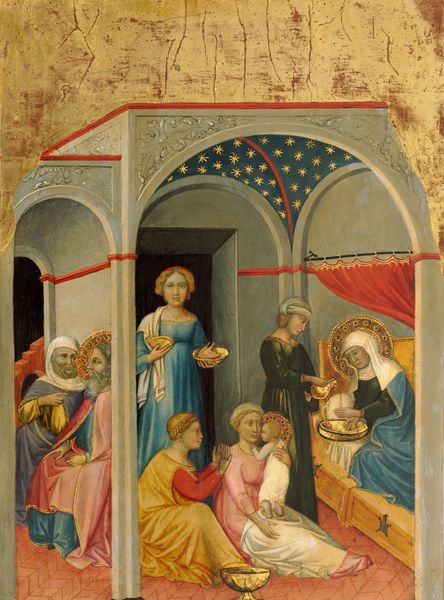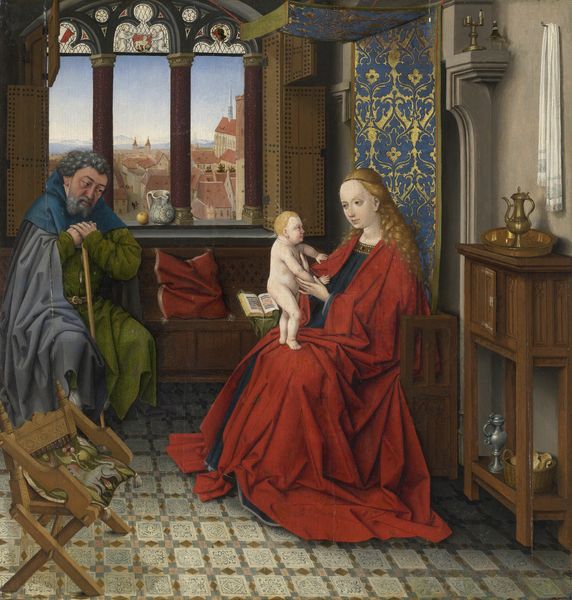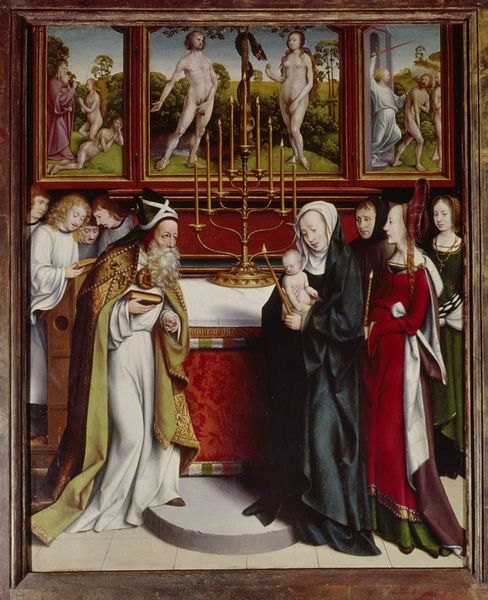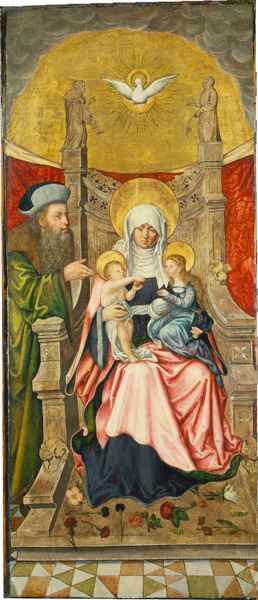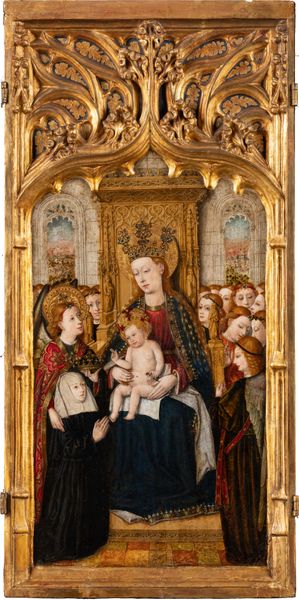
tempera, painting, oil-paint
#
portrait
#
medieval
#
narrative-art
#
tempera
#
painting
#
oil-paint
#
holy-places
#
figuration
#
oil painting
#
history-painting
#
international-gothic
Dimensions: 37.6 x 23.7 cm
Copyright: Public domain
Editor: So, this is Stefan Lochner’s "Presentation of Christ in the Temple," from around 1445, an oil and tempera on wood piece. It feels… staged, almost like a theater production, with very controlled emotions on display. What do you see when you look at this painting? Curator: I see a potent articulation of power dynamics within the patriarchal structures of the 15th century. Think about the concept of 'presentation' itself – what does it mean to present someone, especially a child, within a sacred space? This act reinforces the control and ownership vested in the male figures, particularly the elder holding Christ. Editor: That makes sense, I didn't think of it that way at first. Curator: Consider also the positioning of Mary and the other women; they are present, but their roles seem passive, almost relegated to witnesses within this pivotal moment. Even the temple setting underscores societal norms where religious authority was primarily held by men. What do you make of their expressions? Do they reveal anything about their agency in this preordained event? Editor: They look…resigned? Like they know this is just how things are. I hadn't thought about the imbalance, but now it seems so obvious. Curator: Precisely. Lochner's work, though seemingly reverent, also subtly unveils the constrained positions of women in religious and social life. It becomes a tableau of complex power relations. Editor: I see it now. It's not just a religious scene; it’s a reflection of societal roles being acted out within a religious framework. Curator: Exactly! By understanding these underlying narratives, we engage with the artwork beyond its surface piety, uncovering its commentary on the intricate choreography of gender, power, and faith. Editor: Thanks. This has given me a lot to consider about how historical context shapes the art we see. Curator: And remember, the real power lies in our ability to question those contexts, fostering conversations that extend beyond the canvas.
Comments
No comments
Be the first to comment and join the conversation on the ultimate creative platform.


